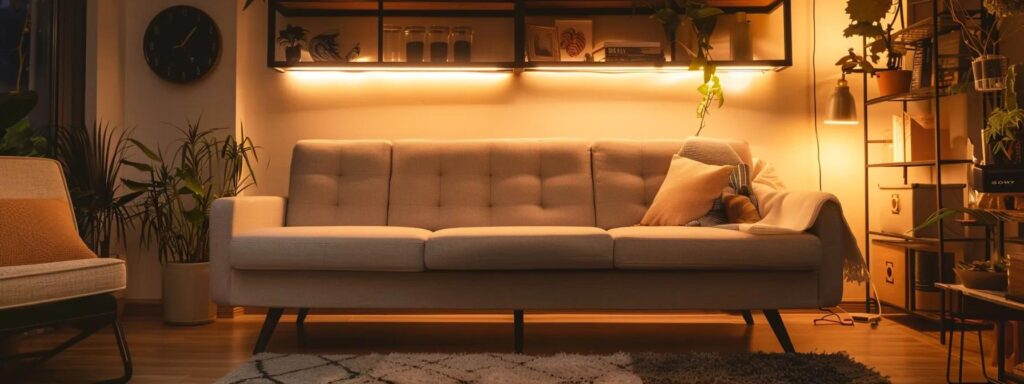Bedding
Understanding the Pros and Cons of Futons and Sofa Beds
When choosing furniture for limited space, many people question whether to opt for futons or sofa beds. Understanding these two options is essential for maximizing comfort and utility in your room. In this article, you will evaluate the advantages and drawbacks of sofa beds while highlighting the benefits and challenges associated with futons. By the end, you’ll have the necessary insights to make an informed decision, helping you find the perfect fit for your needs. With futons and sofa beds on sale now, you can transform your space efficiently, ensuring both style and comfort.
Identifying the Key Differences Between Futons and Sofa Beds
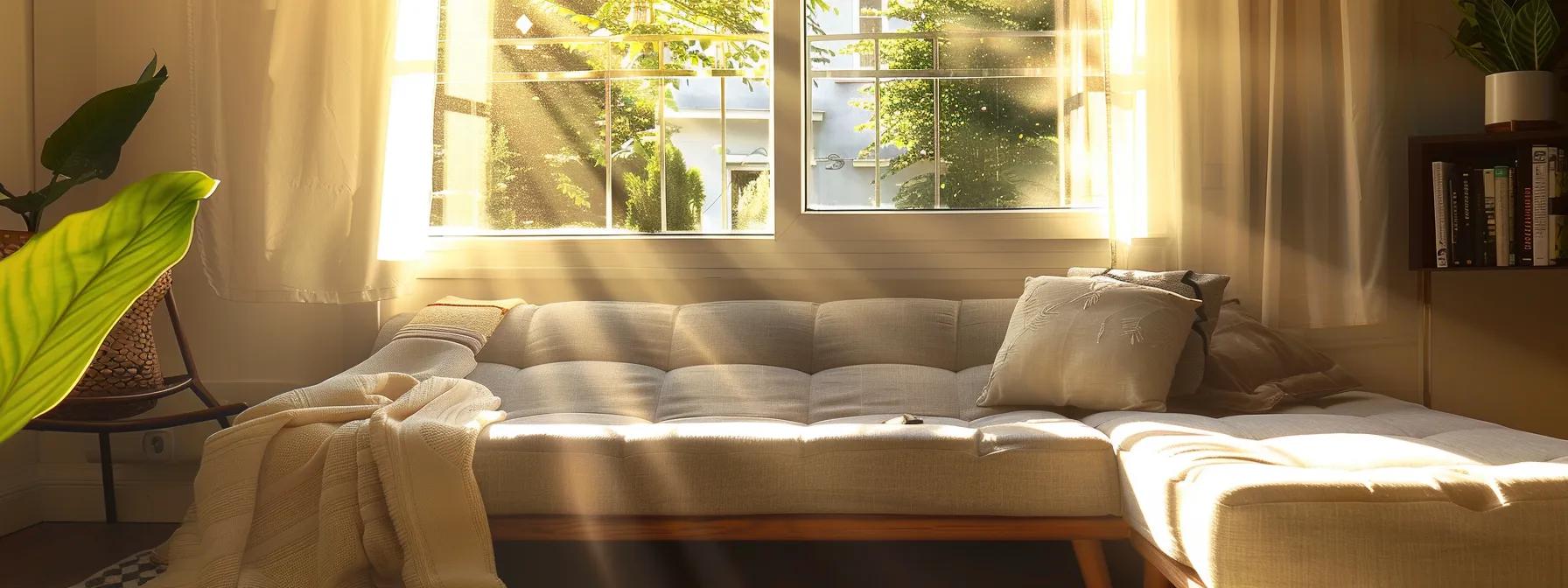
A sofa bed is a versatile piece that combines a traditional sofa with a bed, typically featuring a foldable mattress that can consist of foam or wool layers. In contrast, a futon is crafted with a simpler design, often comprising a mattress filled with cotton supported by a flexible frame made of metal or wood. Understanding these differences will help you make informed decisions when evaluating comfort, construction, and usability. Both options are on sale now.
Defining What a Sofa Bed Is
A sofa bed is an adaptable piece of furniture designed to seamlessly transition between a traditional sofa and a bed, making it a popular choice for living rooms and small spaces. Generally, it features a foldable mattress, which often contains layers of memory foam or other supportive materials, ensuring comfort when used as a bed. This versatility allows you to host guests overnight without sacrificing space during the day.
In addition to its practical design, a sofa bed often comes with integrated cushions or pillows, which can enhance the aesthetic appeal of your living area while providing extra comfort. Many models are engineered to address common pain points associated with sleeping on traditional sofas, such as lack of support or inadequate sleeping surface. As a result, you can enjoy a restful night’s sleep even in a multifunctional space.
When considering a sofa bed for your dining room or living area, it is essential to evaluate its ease of use and assembly. Some designs are equipped with a straightforward mechanism that allows you to convert the sofa into a bed quickly. This can be particularly beneficial during gatherings or family events, ensuring your space remains functional and welcoming for your guests.
Defining What a Futon Is
A futon is a practical and flexible piece of furniture that serves as both a sitting area and a bedding option. Typically, it features a soft mattress that is often filled with cotton, making it comfortable for lounging or sleeping. Unlike a sofa bed, a futon generally has a minimalist design that allows it to fit seamlessly in various spaces, whether it’s a cozy bedroom, a multifunctional living area, or even an office that doubles as a desk space.
One of the most appealing aspects of a futon is its ability to adapt to your preferences. You can easily fold it down into a flat bed or lift it to sit upright, making it an efficient solution for small spaces. This versatility also comes without compromising style, as numerous upholstery options are available to suit your aesthetic, ensuring the futon complements your decor while providing all the benefits of a comfortable sleeping surface.
When selecting a futon, consider its placement on the floor and how it interacts with your overall space. The lightweight design makes it convenient for moving, allowing you to rearrange your furniture as needed. Whether you need extra sleeping arrangements for guests or simply want a versatile seating option, a futon can provide a chic and functional addition to your home, addressing common concerns of space constraints and usability.
Sofa beds stand out for their unique benefits, offering solutions that fit different needs. Let’s take a close look at their advantages and see why they might be the perfect choice for your space.
Evaluating the Advantages of Sofa Beds
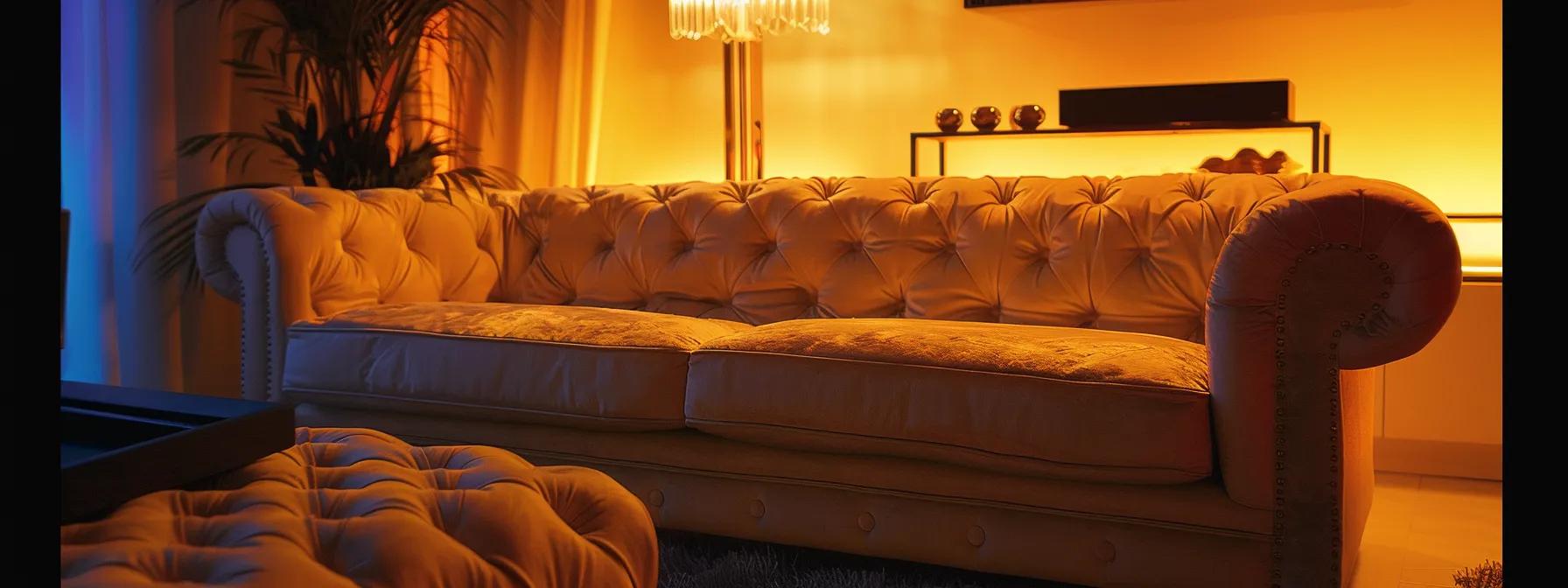
When considering a sofa bed, focus on its comfort level, as many models incorporate latex or supportive materials for a restful sleeping experience. Space efficiency allows you to maximize your area, while the aesthetic appeal enhances your decor. The versatility of a sofa bed provides functionality, whether used for guests or lounging. Lastly, maintenance requirements are typically straightforward, ensuring your investment remains practical and stylish.
Comfort Level of Sofa Beds
The comfort level of sofa beds can vary significantly based on their design and construction. Many sofa beds incorporate high-quality materials, such as memory foam or latex, which support a restful night’s sleep. When choosing a sofa bed for your space, consider how these materials align with your comfort preferences; you want a product that not only looks good in your interior design but also provides optimal support.
Furthermore, modern sofa beds are designed with user convenience in mind, including easy-to-use mechanisms for transforming the sofa into a bed. This makes hosting overnight guests simple and stress-free, ensuring that your visitors have a comfortable sleeping arrangement. A well-designed murphy bed can also serve multiple purposes, fitting seamlessly within your living space without sacrificing comfort or style.
When comparing sofa beds to other options like futons, the unique features of sofa beds cater to various needs. For example, if you are looking for something that transitions easily from a seating area to a bed, a sofa bed might be more suitable, especially for small spaces. The various designs available mean that you can find a sofa bed that complements your home’s aesthetics while addressing practical concerns related to comfort and usability.
Space Efficiency of Sofa Beds
When considering space efficiency, sofa beds stand out as a practical solution for many households. They provide the functionality of a sofa by day and transform into a bed at night, saving valuable floor space in smaller rooms. This versatility is particularly advantageous for those living in apartments or homes where every square foot counts, allowing you to host guests without the need for a separate spare room.
Sofa beds often come in various materials, including leather, which offers a stylish look while being easy to maintain. Options with adjustable beds allow you to modify the seating and sleeping positions to suit your comfort needs, maximizing the benefits of your investment. When you integrate blankets into your design, you can easily create a cozy atmosphere for guests, enhancing comfort without compromising on style.
Ultimately, the space-saving design of sofa beds makes them an appealing choice for those seeking multifunctional furniture. Whether you need a compact seating arrangement or a comfortable sleep space for visitors, sofa beds efficiently meet these requirements. By optimizing your living area, you can enjoy a more organized and inviting home environment, tailored to accommodate your lifestyle.
Aesthetic Appeal of Sofa Beds
The aesthetic appeal of sofa beds lies in their versatility and modern design, making them an attractive addition to various spaces. They are available in a wide range of styles, colors, and materials, allowing you to select a piece that complements your interior decor. By incorporating a stylish mattress pad, you can enhance the overall look while ensuring comfort for overnight guests, giving your living area a chic yet functional vibe.
Many sofa beds come with contemporary designs that prioritize both form and function, allowing you to create a welcoming environment for both relaxation and entertaining. Choosing a sofa bed with a unique shape or texture can make a bold statement in your room, attracting attention and serving as conversational pieces. The ability to easily convert a sofa into a sleeping pad adds practical elegance, ensuring your home remains inviting without sacrificing style.
When considering the visual harmony of your living space, a well-chosen sofa bed provides seamless integration with other furnishings. Look for options that blend well with your existing elements, ensuring your home feels cohesive. By investing in a quality piece that fits your aesthetic needs, you enhance the overall atmosphere of your home while offering a practical solution for comfort and usability during gatherings or family visits.
Versatility of Sofa Beds
Sofa beds are designed to offer significant versatility for your living space. They can function as both a couch for lounging during the day and a comfortable bed for overnight guests, making them ideal for smaller homes or apartments. This dual-purpose functionality allows you to make the most of your available space, ensuring you have the flexibility to accommodate visitors without needing a separate guest room.
The adaptability of sofa beds extends beyond their basic function. Many models allow you to choose from various configurations and designs, which can fit into different styles of decor. This means you can select a sofa bed that enhances the aesthetic of your room while serving practical needs. From modern to traditional styles, the wide range of options ensures that you do not have to compromise on visual appeal for the sake of functionality.
In addition, the ease with which you can convert a sofa bed makes it a practical choice for spontaneous gatherings. No matter the occasion, having a sofa bed means that you can quickly prepare a cozy sleeping area for guests. This convenience ensures that your home remains hospitable and welcoming, providing a solution that is both stylish and pragmatically beneficial:
Maintenance Requirements of Sofa Beds
Maintaining a sofa bed can be straightforward, ensuring that it remains a functional and attractive piece in your home. Regularly check the mechanism that allows you to convert the sofa into a bed, as dust or debris can hinder its operation. Keeping it clean and free of obstructions will help prolong its lifespan and keep it ready for use at a moment’s notice.
Cushions and mattress covers on many sofa beds may be removable and washable, providing an easy way to maintain hygiene. You should follow the care instructions for the fabric, as proper cleaning will prevent stains and odors from accumulating over time. Spot cleaning with mild detergents can also help address minor spills and maintain the freshness of your seating area.
Another important aspect of maintenance is ensuring the frame remains sturdy and free from any loose parts. Periodically check the screws and joints, especially if you frequently convert the sofa into a bed. By addressing any wear and tear promptly, you can ensure that your sofa bed retains its structural integrity while providing a comfortable sleeping solution for your guests.
Sofa beds offer tempting advantages, making them a popular choice for small spaces. Yet, like anything, they have their downsides that deserve careful thought.
Assessing the Drawbacks of Sofa Beds
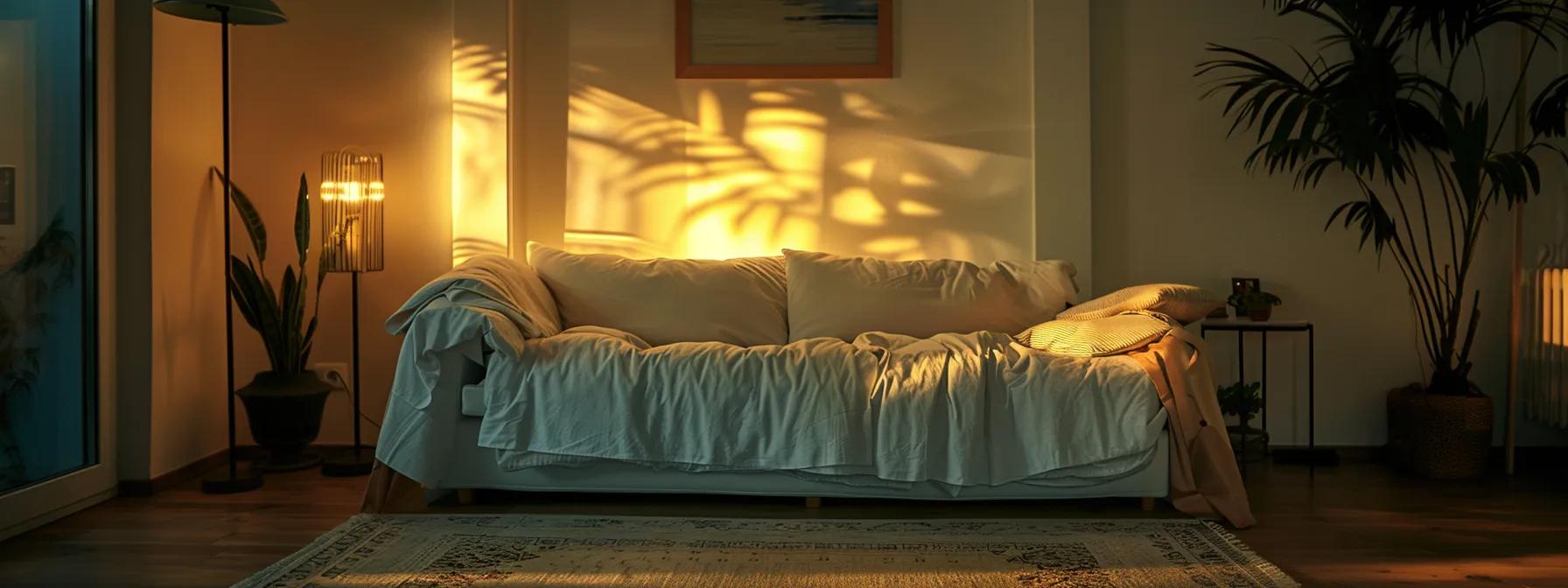
While sofa beds offer many benefits, there are also drawbacks to consider. Potential durability issues may arise, impacting the long-term use of your sofa bed. Price considerations can vary significantly, and seating comfort may not always meet expectations. Additionally, the complexity in usage and size constraints often present challenges for some users. Understanding these aspects will help you make a well-rounded decision.
Potential Durability Issues With Sofa Beds
One significant concern regarding sofa beds is their potential durability issues. Many models utilize mechanisms that allow the bed to fold out, but over time, these mechanisms can wear down. Frequent use or improper handling may result in the parts becoming less functional, leading to difficulties when transforming the sofa into a bed.
Additionally, the wear on the mattress itself should be considered. Sofa beds often have thinner mattresses compared to traditional beds, which can lead to sagging and discomfort with regular use. If you frequently rely on your sofa bed for guests, this degradation can affect the overall sleeping experience, leaving your visitors feeling less rested.
Lastly, the frame of a sofa bed may not always be as robust as a conventional sofa, particularly in budget-friendly options. This can make the sofa bed susceptible to structural issues over time. Focusing on quality during your purchase can minimize these concerns, ensuring you select a durable option that lasts:
- Evaluate the mechanism and choose a model with a reliable design.
- Consider the mattress thickness; thicker options may offer better longevity.
- Prioritize sturdy frames to enhance structural integrity over time.
Price Considerations for Sofa Beds
When evaluating price considerations for sofa beds, it’s essential to recognize that costs can vary widely based on materials and design. Higher-priced models often feature premium construction, including durable frames and quality mattresses, which can impact both comfort and longevity. Investing in a quality sofa bed can provide better support for overnight guests, ensuring they have a more restful experience.
Additionally, you should weigh the value of multifunctionality against the upfront cost. Sofa beds serve two purposes—both as seating and sleeping arrangements—which can eliminate the need for separate furniture. This dual functionality can justify a higher price point, especially if you live in a smaller space where maximizing utility is essential.
Lastly, consider the long-term investment when assessing the price of a sofa bed. While a budget-friendly option may seem appealing, it could lead to higher replacement costs over time due to durability concerns. Prioritizing quality may initially require a larger financial commitment but can ultimately save you from future expenses related to replacements or repairs, thus providing better value in the long run.
Limited Seating Comfort for Sofa Beds
One notable drawback of sofa beds is their limited seating comfort. Many models prioritize the functionality of converting into a bed, which can lead to compromises in the seating area. As a result, you may find that the couch feels stiff or lacks adequate cushioning for extended periods of sitting, making it less comfortable for everyday use.
In a typical sofa bed, the design often features a thinner mattress that may not provide optimal support when sitting. The seating surface sometimes tends to sink or feel uneven, especially if several guests are seated at once. If comfort during social gatherings or casual lounging is a primary concern for you, this aspect of sofa beds can be a significant limitation.
Considering these factors, it is essential to weigh the seating comfort of a sofa bed against your needs. If you anticipate regular use as a couch, looking for a model that offers enhanced seating features might help resolve discomfort issues. Prioritizing quality materials and supportive designs can lead to a more satisfying experience for both sitting and sleeping needs:
Complexity in Use of Sofa Beds
Using a sofa bed can sometimes present challenges, especially in terms of its conversion mechanism. Many models rely on various folding techniques that may require a bit of practice to master. This complexity can be frustrating, particularly if you need to make quick adjustments for unexpected guests or gatherings.
In addition to conversion difficulties, some sofa beds are designed with mechanisms that can be cumbersome. If the mechanism jams or becomes stiff, it can be challenging to transition the piece between a sofa and a bed. This issue can hinder the overall usability of your sofa bed, affecting your hosting capabilities and the comfort of your overnight guests.
Consideration of space is another crucial factor in using a sofa bed effectively. When transitioning from sofa to bed, you may need sufficient room to fully extend the bed frame without obstruction. An impractical configuration can limit your options when entertaining, leading to an experience that feels more stressful than accommodating:
Size Constraints of Sofa Beds
One of the primary concerns with sofa beds is their size constraints. While they may appear convenient, many models tend to be bulkier than traditional sofas, limiting their fit in smaller rooms or apartments. If space efficiency is a key consideration for you, it is essential to thoroughly measure the area where you plan to place the sofa bed.
Additionally, the overall dimensions of a sofa bed may restrict how it functions in your living space. Some designs require more room to operate effectively, particularly during the conversion from sofa to bed. This may not be an issue in larger homes, but in compact environments, the necessary clearance can significantly reduce your usable space.
When selecting a sofa bed, consider not only its dimensions but also the layout of your room. Choosing a model that optimizes both seating and sleeping areas can be beneficial. Remember, if the size of the sofa bed doesn’t align with your space requirements, it may lead to dissatisfaction, impacting your overall comfort and enjoyment:
- Measure your room to ensure the sofa bed fits well.
- Consider the space needed for transitioning from sofa to bed.
- Choose designs that complement your available space for better functionality.
Even with their flaws, the pull of comfort lingers. In contrast, futons reveal a simpler, more versatile path to relaxation and rest.
Highlighting the Advantages of Futons
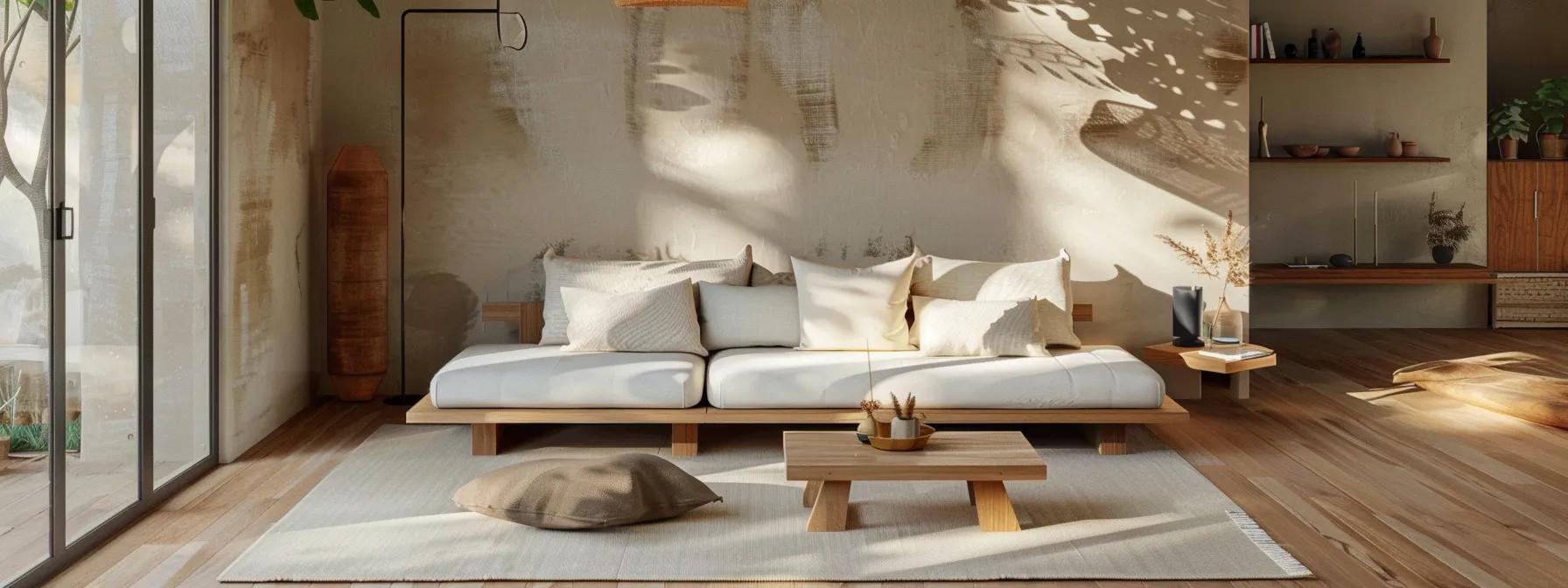
Futons offer several advantages that make them an appealing choice for various living spaces. Their space-saving nature allows you to optimize smaller areas effectively. You will find futons to be more affordable than traditional sofa beds, making them a cost-effective solution. The ease of transformation into a bed ensures you can quickly adapt your space for guests. Design variety means you can select from numerous styles that fit your decor, while their lightness and mobility make rearranging effortless. Each of these aspects enhances the overall utility and appeal of futons in your home.
Space-Saving Nature of Futons
Futons are designed with space efficiency in mind, making them an ideal choice for smaller living areas. Their flexible design allows you to easily convert them from a couch to a bed, ensuring that precious square footage is utilized effectively, especially in tight spaces such as studio apartments. By investing in a futon, you can adapt your environment to suit both relaxation and sleeping needs without overwhelming your room with bulky furniture.
A significant advantage of futons is their lightweight structure, which empowers you to move and rearrange them with ease. This mobility is particularly beneficial for those who enjoy changing their living space layout or need to accommodate fluctuating guest numbers. The ability to shift a futon around can transform your area quickly, catering to various social gatherings or quiet evenings at home.
Choosing a futon can be a practical solution for maximizing your living space while maintaining style. With a variety of designs available, you can find a futon that suits your decor, ensuring that it complements rather than disrupts your aesthetic vision. This versatility not only enhances the look of your home but also provides an efficient sleeping option for guests, helping you address common space constraints with ease.
Affordability of Futons
Futons are an economical choice for anyone looking to furnish their home without breaking the bank. The cost of a futon is typically lower than that of a traditional sofa bed, providing a budget-friendly option that satisfies both seating and sleeping needs. This affordability makes it an appealing solution for students, young professionals, or anyone residing in smaller spaces who require versatile furniture.
When you explore futons, you’ll find a wide range of price points, allowing you to select a model that fits your budget. Many manufacturers offer quality futons that don’t sacrifice comfort or style, ensuring that you can find a cost-effective option without compromising your aesthetic preferences. This balance between affordability and design makes futons a practical addition to various living environments.
Choosing a futon can also lead to long-term savings. Their dual function means you won’t need to purchase separate pieces of furniture for sitting and sleeping, ultimately reducing your overall expenses. With the right futon, you can maximize your space and financial resources, creating a comfortable home setup that accommodates your lifestyle needs effectively.
Ease of Transformation in Futons
Your experience with futons will likely highlight their user-friendly transformation capabilities. These versatile pieces of furniture allow you to easily shift from a comfortable seating arrangement to a flat sleeping space, making them an optimal choice for both relaxation and hosting guests. This simplicity in conversion means that you can effortlessly adapt your space for unexpected visitors or cozy movie nights.
The design of futons emphasizes functionality, as you can adjust them quickly to suit your needs. Whether you are settling in for a day of leisure or preparing for overnight guests, the straightforward mechanism enables a seamless transition that does not require complicated steps. This ease of use can significantly enhance your daily living experience, especially in smaller environments where every detail counts.
By incorporating futons into your home, you create a flexible space that responds to various activities throughout your day. The ability to transform your futon with minimal effort ensures that your living area remains functional without sacrificing style. This adaptability is particularly valuable for those living in compact spaces, allowing you to enjoy both comfort and practicality in your overall design.
Design Variety With Futons
Futons offer an impressive range of design options, allowing you to customize your living space according to your personal style. Whether you prefer a contemporary look with sleek lines or a more traditional aesthetic with ornate details, there are futon designs to suit every taste. This variety ensures that you can find a piece that not only meets your functional needs but also complements your decor beautifully.
You can choose from an assortment of colors, fabrics, and configurations, making it easy to match your futon with your existing furnishings. Popular choices include cotton, microfiber, and even leather, catering to different preferences for comfort and maintenance. This flexibility in design empowers you to create a cohesive look in your home, enhancing the overall visual appeal of your space.
Furthermore, futons often come in different sizes and shapes, enabling you to select the perfect fit for your specific area. Whether you need a compact model for a small apartment or a larger version for a game room, the options available ensure you’ll find a futon that seamlessly integrates into your environment. Consider these design aspects when selecting your futon to ensure it meets your aesthetic and practical requirements:
- Variety of colors and patterns.
- Multiple fabric options for comfort and maintenance.
- Different sizes and styles to suit various spaces.
Lightness and Mobility of Futons
The lightness of futons makes them an ideal choice for those who frequently rearrange their living spaces. Unlike heavier alternatives, futons allow you to easily move and reposition them to suit your needs. This flexibility is particularly beneficial in compact homes where maximizing space is essential.
Mobility is another key advantage of futons, enabling you to adapt your living area for various occasions. Whether you’re hosting a gathering or simply need extra seating, you can transition your futon to fit the moment. Their lightweight nature ensures you can set up a cozy environment quickly without feeling overwhelmed by your furniture.
When selecting a futon, consider how its portability can enhance your lifestyle. You might find that the ease of movement allows for spontaneous gatherings or changes in decor with minimal effort. By choosing a futon, you gain a functional piece that effortlessly meets your needs while keeping your space versatile and inviting.
Futons bring comfort and versatility. Yet, like all things, they have their downsides that deserve your attention.
Understanding the Disadvantages of Futons
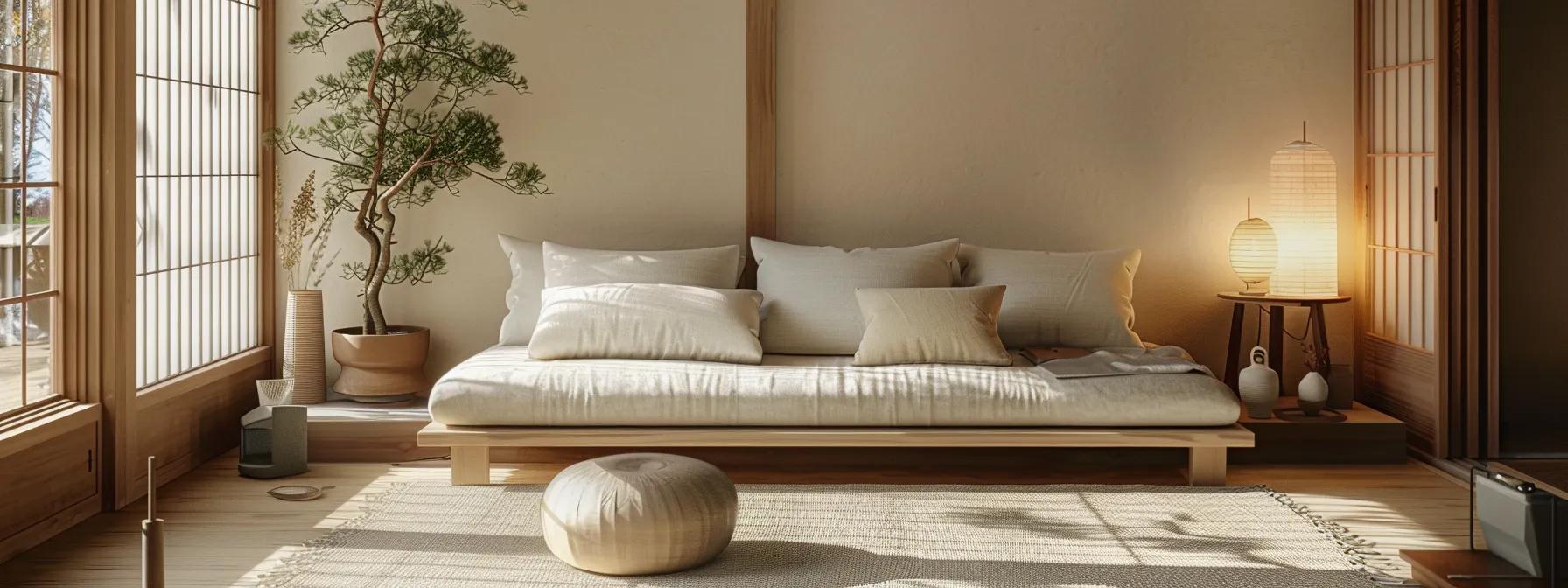
When considering a futon, it’s essential to understand its potential drawbacks. You may find that comfort levels in futons can vary, affecting your relaxation experience. Durability concerns may arise with frequent use, while maintenance and care requirements can impact practicality. Aesthetic limitations and the often limited support provided by futons also deserve your attention. Each of these factors will be examined in detail below.
Comfort Levels in Futons
When considering comfort levels in futons, it’s important to recognize that they may not always provide the support needed for a restful night’s sleep. Many futons come with thinner mattresses, which can lead to discomfort over extended use, especially for overnight guests. Depending on the materials used, you might find that a futon lacks the cushioning found in traditional beds, potentially impacting the quality of rest you or your guests receive.
In addition to mattress thickness, the construction of a futon can influence overall comfort. The design may not always accommodate different sleeping positions effectively, which could leave you feeling unsupported. If you plan to use a futon frequently for sleeping, testing its comfort level before making a purchase is advisable to ensure it meets your needs.
Ultimately, while futons serve as a versatile solution for seating and sleeping, you should consider their comfort limitations. If you often host guests or need reliable sleeping arrangements, choosing a high-quality futon with adequate padding or opting for a thicker mattress can significantly improve your experience. Balancing comfort with the practical benefits of a futon will help you achieve a functional and inviting living space.
Durability Concerns in Futons
Durability is a key consideration when evaluating futons. Many futons are constructed with lightweight materials, which may not withstand heavy daily use as effectively as traditional sofas. Over time, this can lead to wear and tear, impacting both the frame and mattress quality.
The mattress thickness and filling material also play a crucial role in durability. You may find that thinner mattresses on some futon models provide minimal support, increasing the likelihood of sagging with regular use. If comfort and stability are priorities for overnight guests, choosing a futon with a thicker mattress and high-quality filling can significantly enhance durability in the long run.
Frequent adjustments between a sofa and bed position can also lead to increased stress on the futon‘s frame and mechanism. If this is a common practice in your household, selecting a model with strong joints and a reliable folding mechanism is essential to maintain its longevity:
- Choose a futon with a thicker mattress for better longevity.
- Look for durable materials and robust construction.
- Regularly check and maintain the mechanism for prolonged use.
Maintenance and Care of Futons
To keep your futon in good condition, regular maintenance is essential. You should vacuum your futon frequently to remove dust and debris, which helps prevent allergens from accumulating. Additionally, spot cleaning stains promptly can maintain its appearance and extend the life of the fabric.
Over time, futons may require more extensive care, such as washing removable covers if available. When selecting cleaning products, opt for gentle detergents to avoid damaging the fabric. Following the manufacturer’s care instructions ensures you preserve the futon’s look and feel while addressing any wear and tear.
Taking care of your futon‘s frame is just as important. Periodically check for loose bolts or signs of wear, as these can impact stability. If you notice any issues, address them promptly to maintain your futon‘s functionality and support throughout its lifespan:
- Vacuum regularly to eliminate dust and allergens.
- Spot clean stains immediately to avoid permanent marks.
- Wash removable covers as per care instructions.
- Inspect the frame for loose parts and address issues quickly.
Aesthetic Limitations of Futons
Your choice of futon may present some aesthetic limitations that need consideration. While futons offer versatility and practicality, their designs can sometimes be more basic or less stylish compared to other furniture options like elegant sofa beds. This minimalist appearance can limit your ability to achieve a sophisticated look in your living space.
Another aspect to consider is the choice of fabrics and colors available for futons. Some options may not offer the same range of upscale materials or intricate patterns found in higher-end sofa beds. If you seek to create a distinct ambiance in your room, you might find the selection of futons less accommodating, potentially impacting your overall decor style.
While the simplicity of futon designs is appealing for some, it may not align with everyone’s aesthetic preferences. If you aim for a luxurious or tailored look in your home, you may need to explore additional design elements to ensure a cohesive space. Understanding these aesthetic limitations can guide you in making a well-informed decision about your furniture choices:
- Futons often feature basic designs that may lack elegance.
- Limited fabric and color options can restrict design flexibility.
- Minimalist appearance may require additional decor to enhance the overall space.
Limited Support in Futons
When considering futons, one notable issue is the limited support they provide. Many futons come with thinner mattresses, which can lead to discomfort for users, especially when sleeping overnight. This lack of cushioning may result in inadequate support for your back and joints, which can affect your overall rest and well-being.
In addition to mattress thickness, the construction of futons can impact their supportive qualities. You might find that certain designs do not adequately cater to different sleeping positions, potentially causing discomfort during the night. Ensuring that the futon you select has a suitable level of padding is essential for achieving a restful sleep experience.
The combination of limited support and thinner mattresses can make futons less suitable for regular overnight use. While they are a practical solution for accommodating guests, if comfort is a priority for you, consider testing the futon‘s firmness before making a decision. Ultimately, finding the right balance between functionality and support is crucial to enhancing your living space and meeting your needs:
Choosing the right seating can define your comfort at home. As you weigh the pros and cons of futons, consider what a sofa bed might bring to your space.
Making the Right Choice Between Futons and Sofa Beds
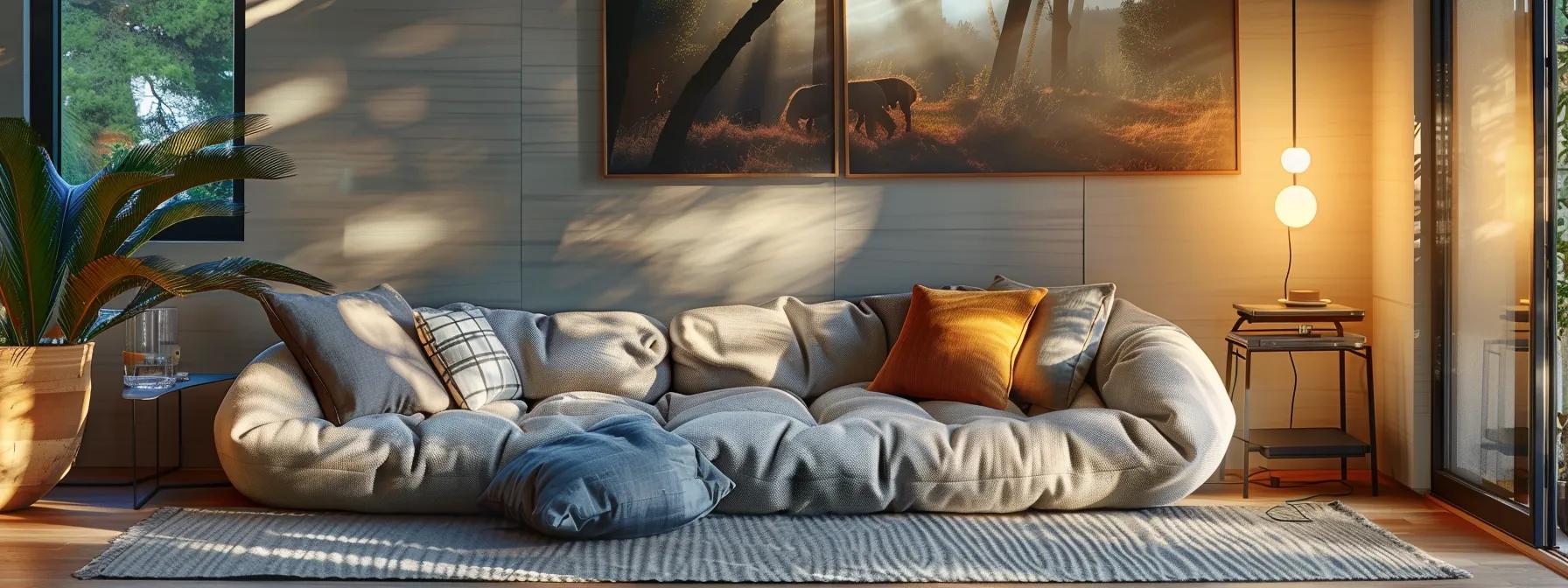
Making the Right Choice Between Futons and Sofa Beds
When deciding between futons and sofa beds, it’s crucial to assess your space requirements, budget constraints, and how frequently you plan to use the furniture. Evaluating your style preferences and long-term needs will also guide your decision. Each of these factors plays an essential role in helping you choose the best option for your living area.
Assessing Your Space Requirements
When assessing your space requirements, it’s important to visualize how both futons and sofa beds will function in your room. Consider the overall layout, including doorways, windows, and any existing furniture that may impact movement or access. A futon might be ideal for tighter areas due to its lightweight structure and ability to convert easily between seating and sleeping, while a sofa bed could be more suitable for larger spaces where a robust design is desired.
Think about how often you will use the conversion feature of either option. If you regularly host guests, a sofa bed may provide added comfort and style, but consider whether its bulkiness fits your designated space. Alternatively, if your living space is small and you rarely need an overnight solution, a futon may be a more practical choice, allowing for easy transformation without overwhelming your area.
Ultimately, measuring your space accurately will help you make an informed decision. Knowing the dimensions of where you intend to place the furniture allows you to select a piece that enhances both the aesthetics and functionality of your home. Always keep in mind the amount of room needed for conversion and movement to ensure a seamless integration of your new furniture:
Identifying Your Budget Constraints
Identifying your budget constraints is a crucial step when choosing between futons and sofa beds. The cost of these furniture options can vary significantly based on design, materials, and features. By determining how much you are willing to spend, you can narrow down your choices, ensuring you find a suitable option that meets both your financial parameters and your functional needs.
While futons typically offer a more economical solution, it is essential to evaluate the long-term value of any investment. Higher-priced sofa beds may feature premium materials and construction, providing enhanced comfort and durability, especially if you plan to use them frequently. By weighing the upfront costs against future savings from reduced need for replacements, you can make a financially sound decision that serves your lifestyle.
Another factor to consider is the availability of financing options or sales on furniture. Keeping an eye out for discounts can help you secure quality futons or sofa beds within your budget while ensuring you don’t compromise on comfort or style. By conducting thorough research and considering your needs, you can confidently invest in furniture that enhances your living space without overstretching your finances.
Determining the Frequency of Use
When determining the frequency of use for your futon or sofa bed, consider how often you expect to host overnight guests. If you frequently have visitors staying over, you may want to invest in a sofa bed that offers enhanced comfort and support. A well-constructed sofa bed can provide your guests with a more restful experience compared to a futon, which may have limitations in terms of comfort during extended use.
On the other hand, if your primary goal is to create a multi-functional space for casual lounging and occasional overnight stays, a futon may be more suitable. Futons are generally easier to convert and can adapt seamlessly to everyday activities. If you anticipate using it primarily as a sofa with an occasional need for a bed, a futon can be an efficient choice that saves space while offering flexibility.
Ultimately, evaluating the frequency with which you intend to convert your furniture will guide your decision. You should weigh your lifestyle needs against both options to ensure you select the right piece for your home. Consider the following aspects when making your choice:
- Frequency of overnight guests
- Daily use as seating
- Space available for converting furniture
- Comfort preferences for guests
Considering Your Style Preferences
When choosing between futons and sofa beds, your style preferences play a vital role. Think about the overall aesthetic of your living space. If you favor a modern look, a sleek sofa bed might be a perfect fit, as many designs incorporate rich fabrics and contemporary lines. Alternatively, if a more casual or rustic vibe aligns with your style, a futon could seamlessly blend into your decor with its minimalist design and variety of upholstery options.
Your chosen furniture should reflect your personal taste and complement existing elements in your home. By selecting a futon or sofa bed that resonates with your aesthetic vision, you not only enhance your room‘s appeal but also create an inviting atmosphere. Consider fabric colors and textures that will enrich your space while offering comfort, as these elements can significantly influence the overall ambiance.
Furthermore, think about how the furniture’s functionality intersects with your style needs. You may appreciate how a stylish sofa bed can serve as a standout piece during gatherings, offering both seating and sleeping options. On the other hand, opting for a versatile futon allows you to maintain a chic yet adaptable environment, efficiently accommodating guests while preserving your personal flair:
- Evaluate your current decor style.
- Consider the impact of fabric and color choices.
- Assess functionality in relation to your aesthetic needs.
Evaluating Long-Term Needs
When evaluating your long-term needs, consider how frequently you anticipate hosting guests. If you often welcome friends and family overnight, investing in a high-quality sofa bed may be more beneficial, as they typically offer enhanced comfort and support compared to futons. A sofa bed can provide a more restful experience, accommodating visitors without sacrificing your living space’s functionality.
Reflect on your day-to-day usage patterns as well. If your goal is to create a dual-purpose area that serves both seating and sleeping needs, a futon could be the ideal choice. Its design allows for quick transformation and can seamlessly adapt to a variety of situations, making it a versatile solution for your home.
Lastly, think about your style preferences and how each option will fit into your decor over time. A sofa bed often displays modern aesthetics that can elevate your living space, while a futon typically offers a more casual vibe. Consider how these furniture pieces align with your long-term vision for your home, ensuring you choose an option that you will be satisfied with for years to come.








